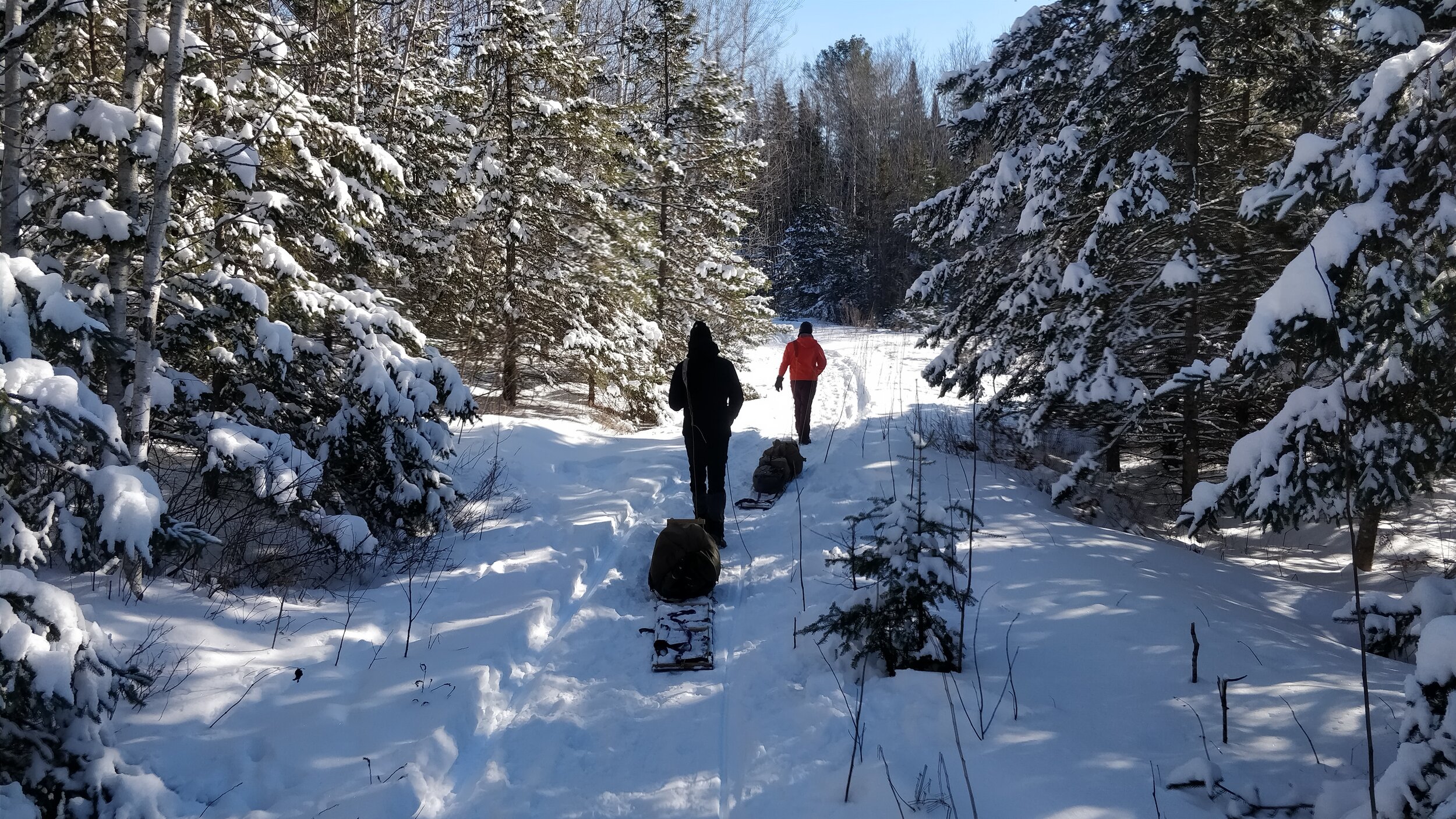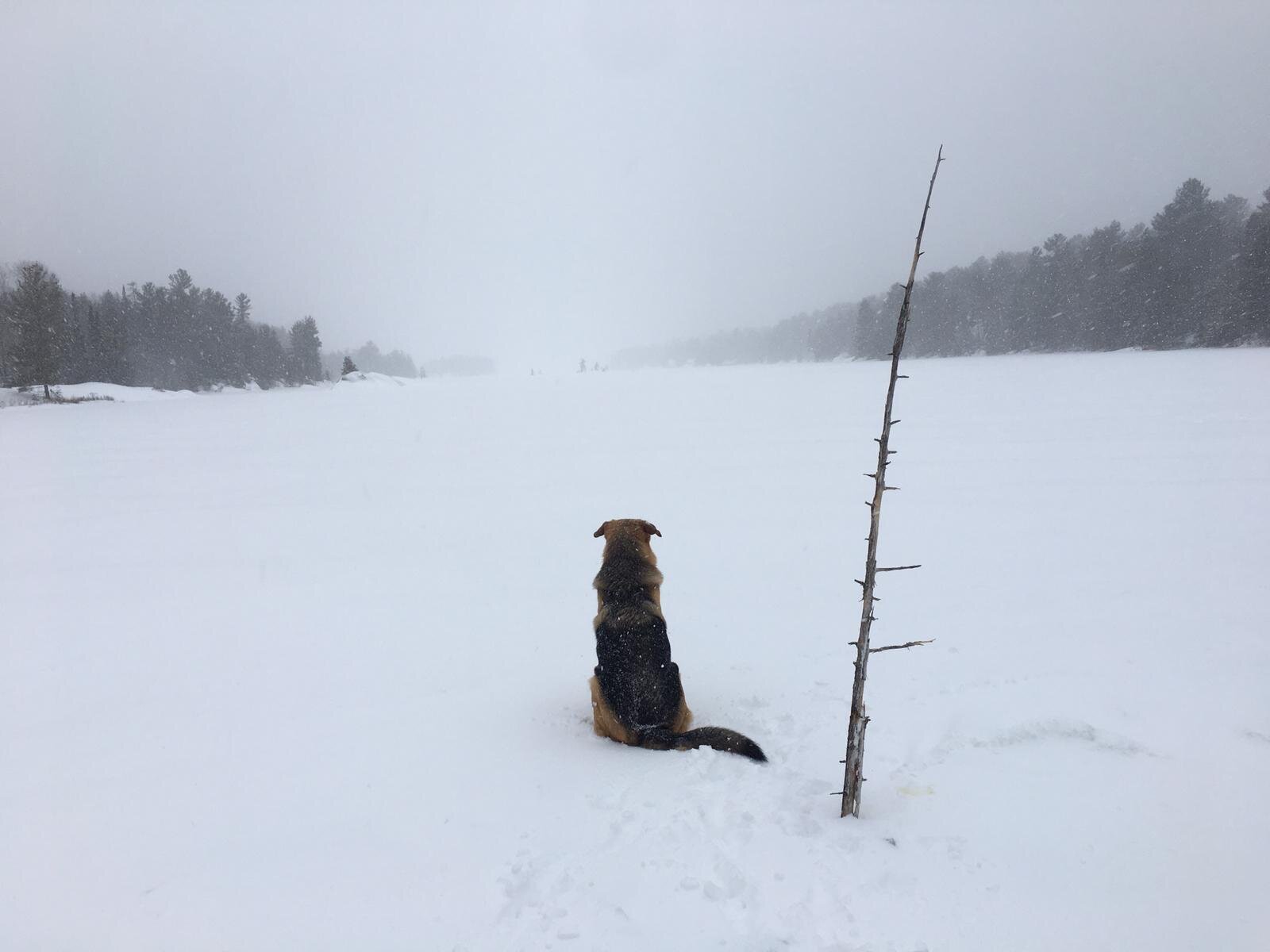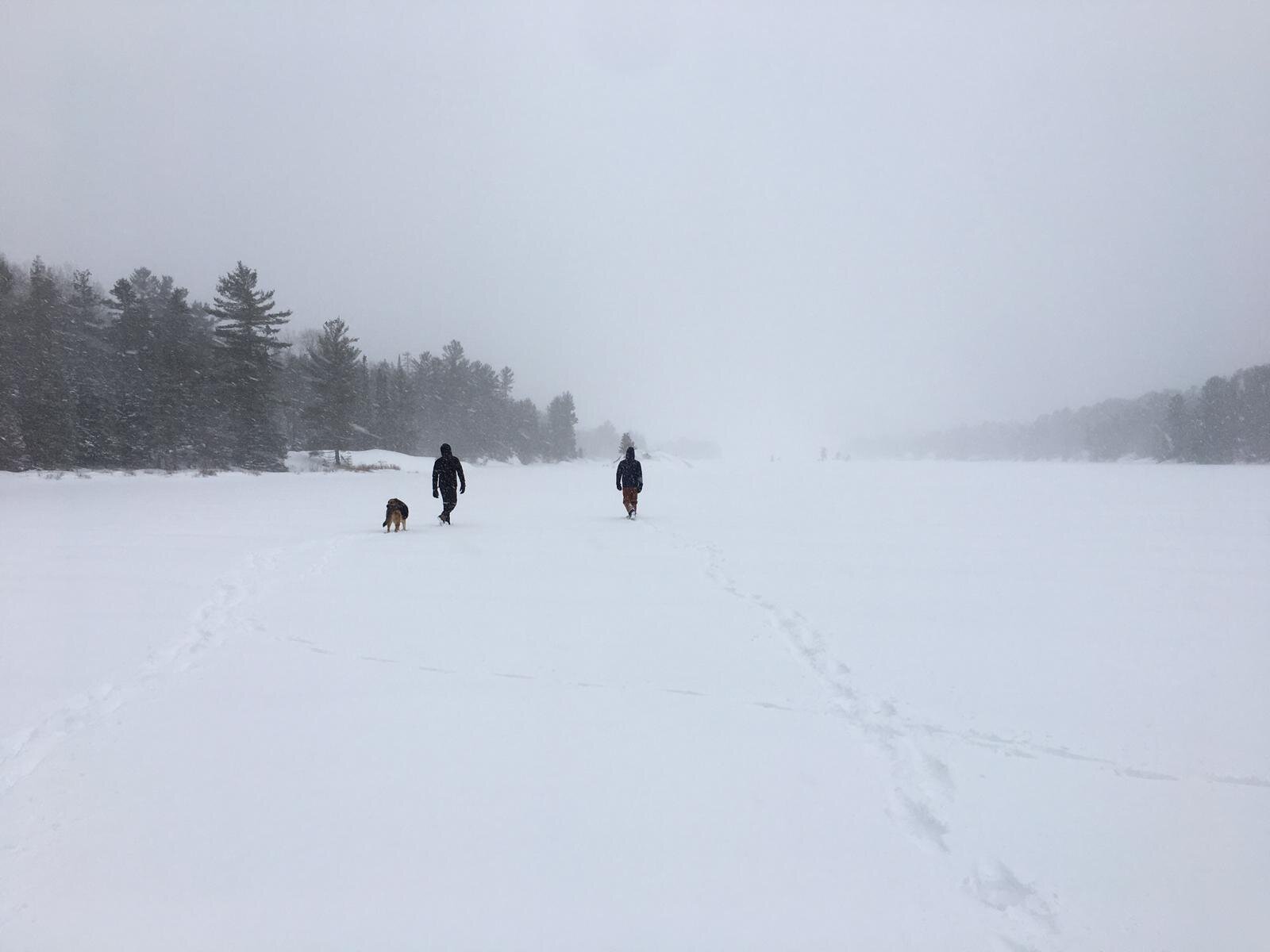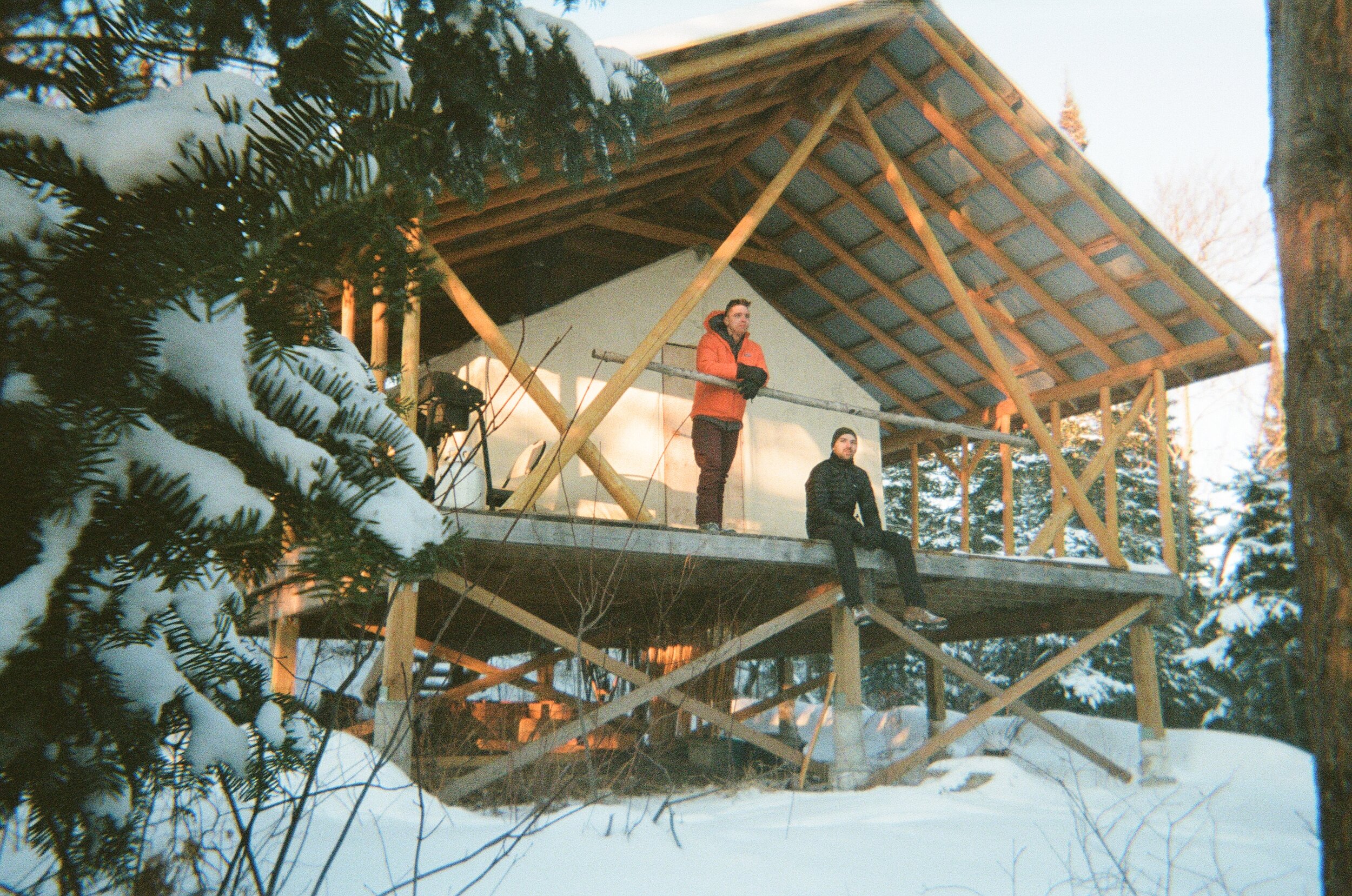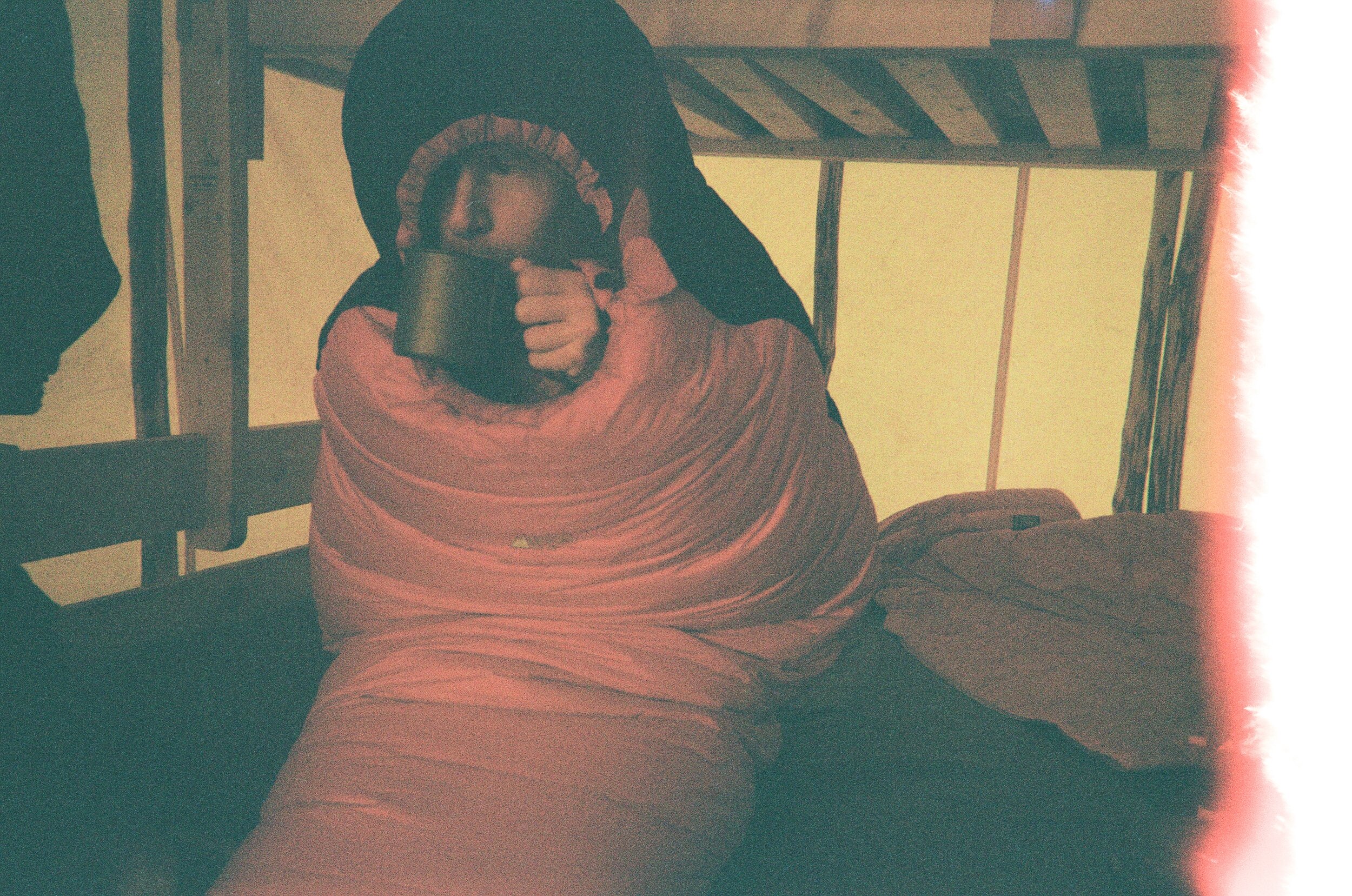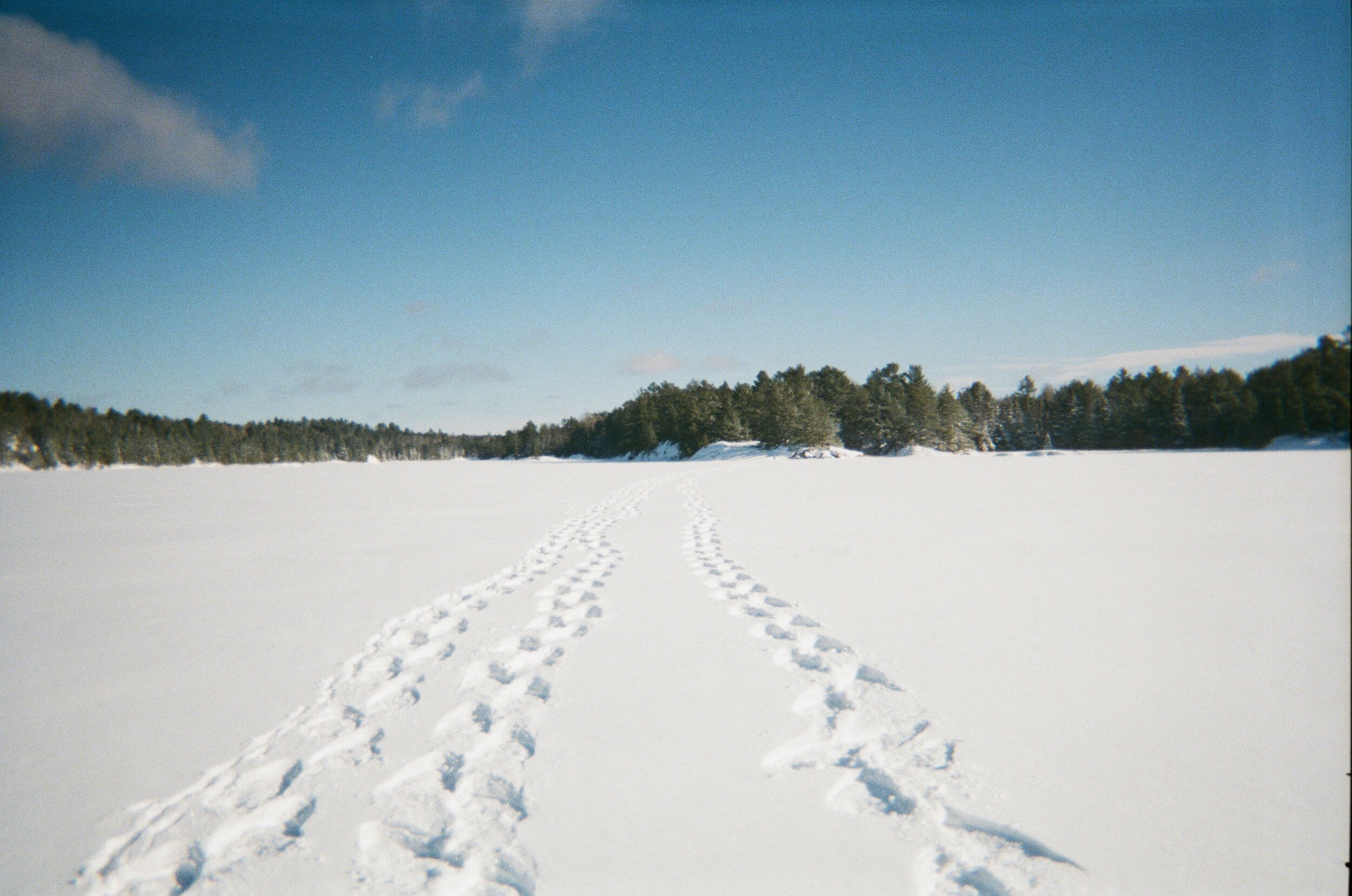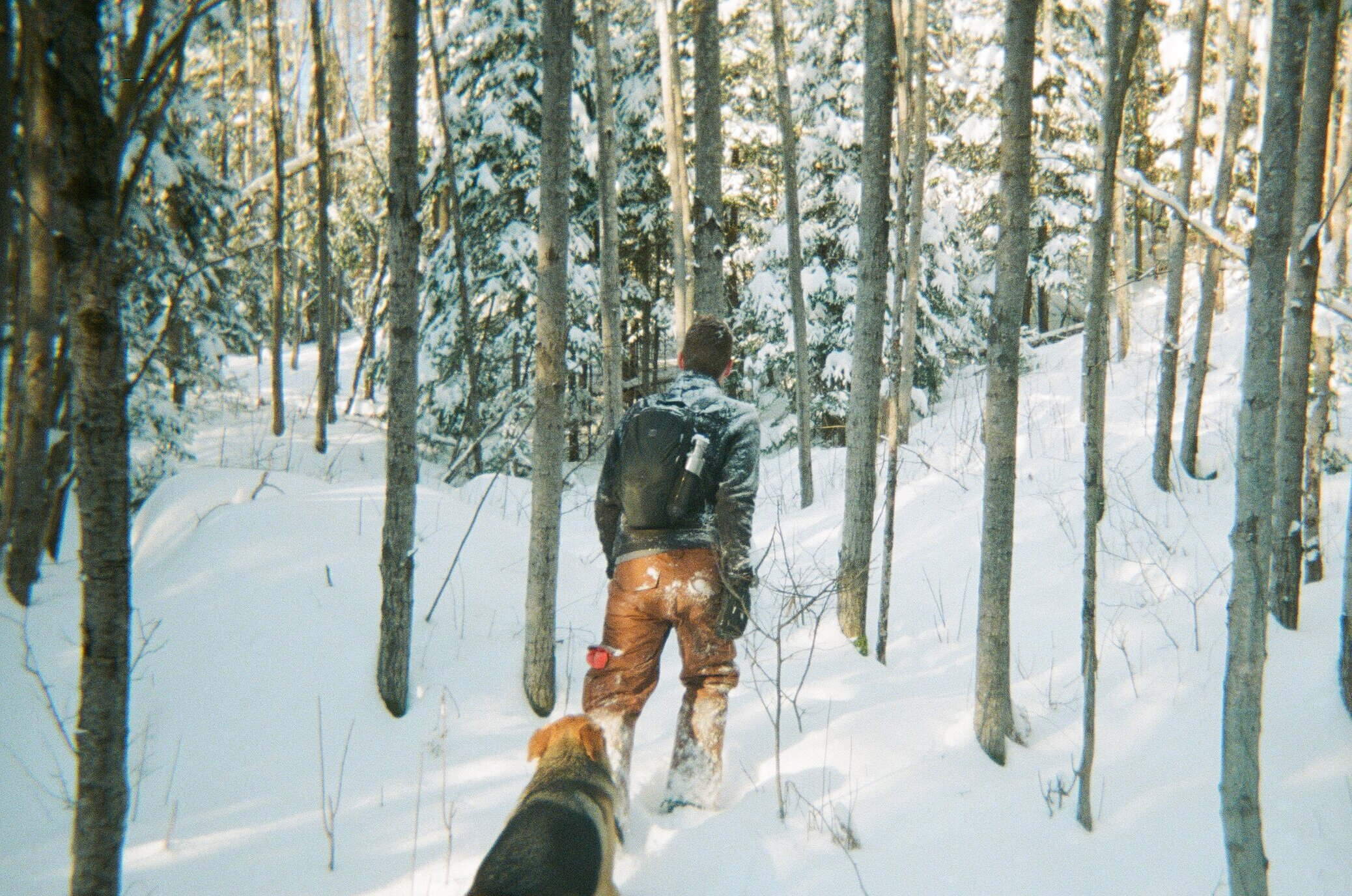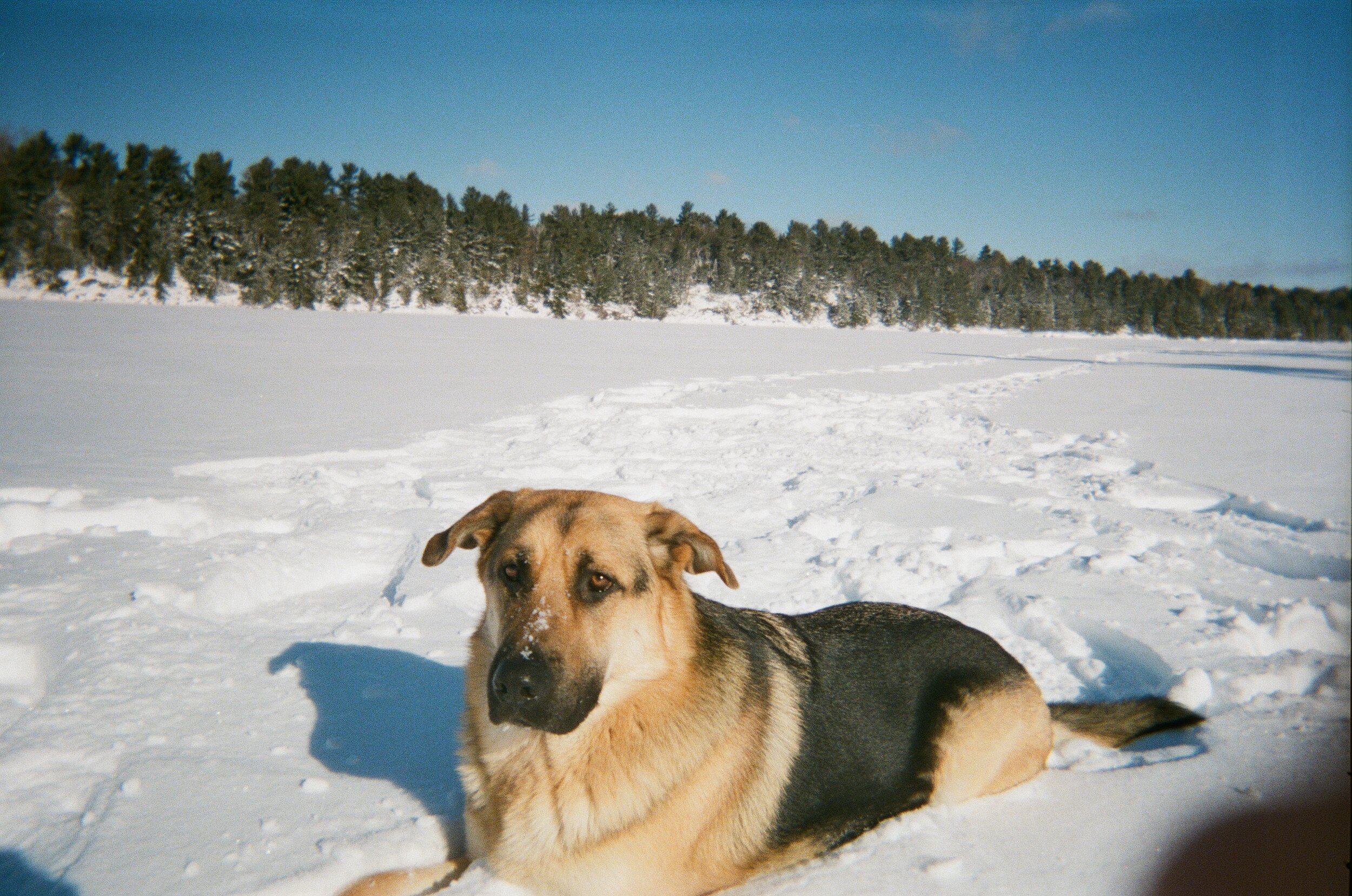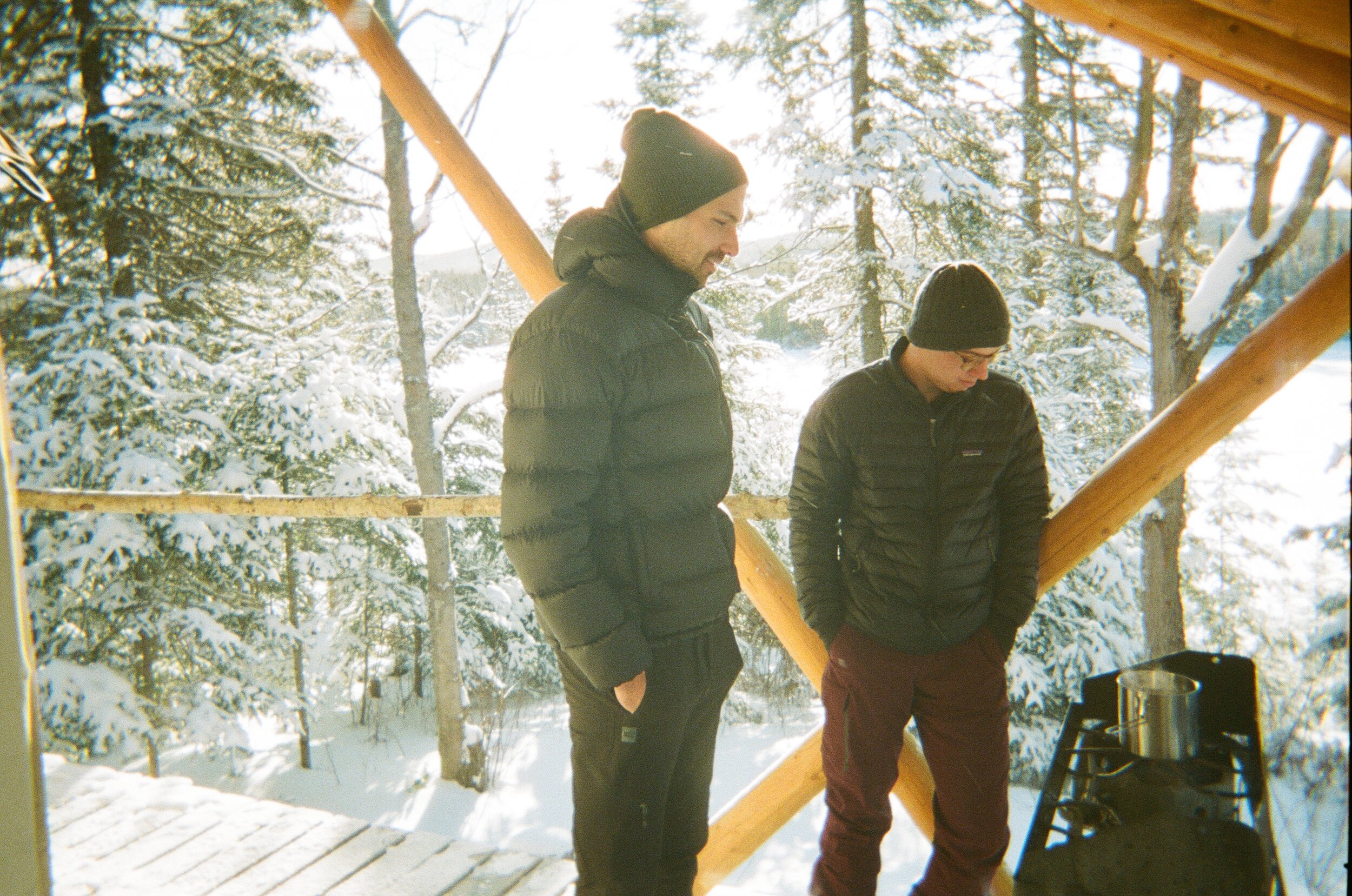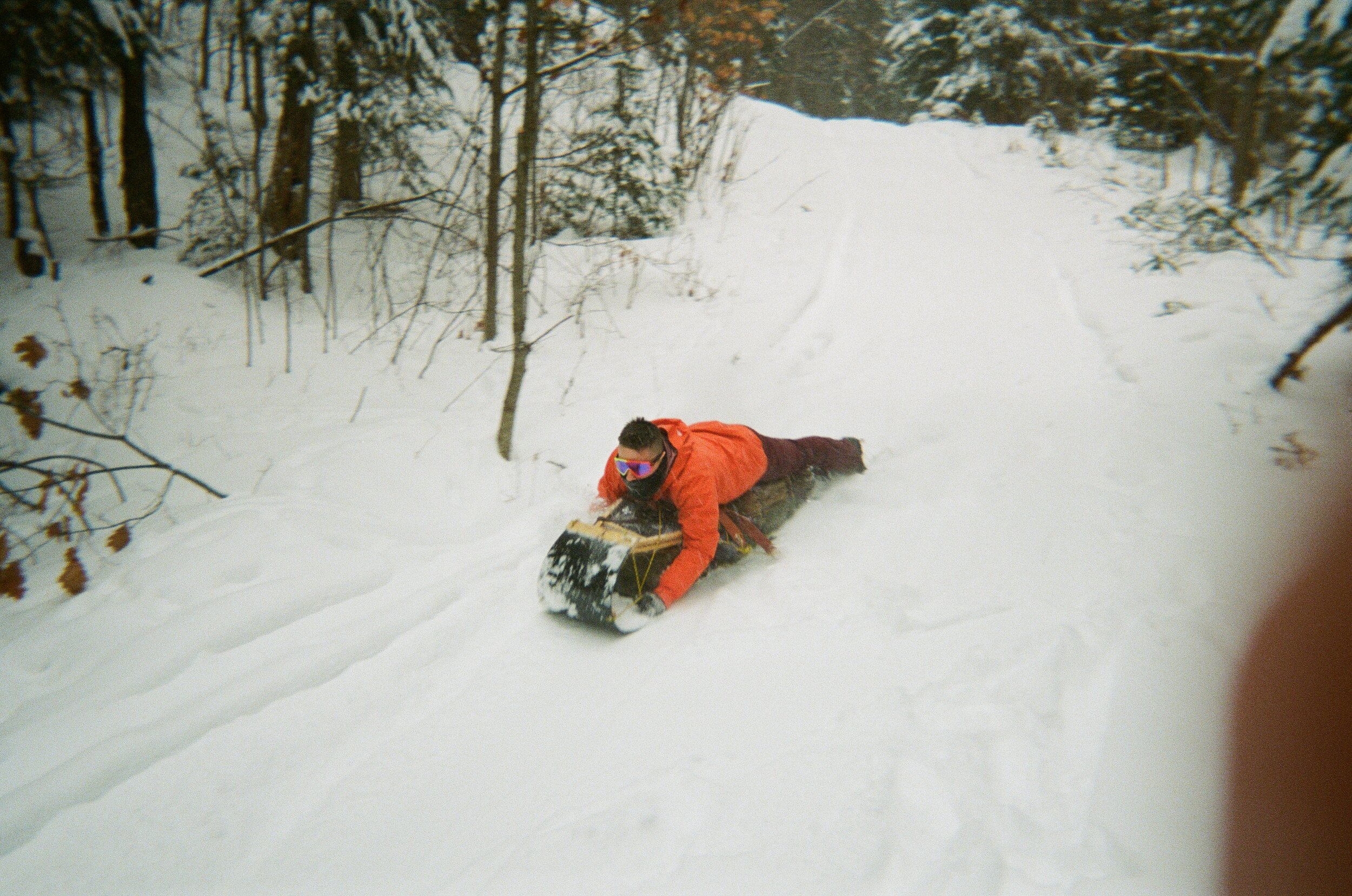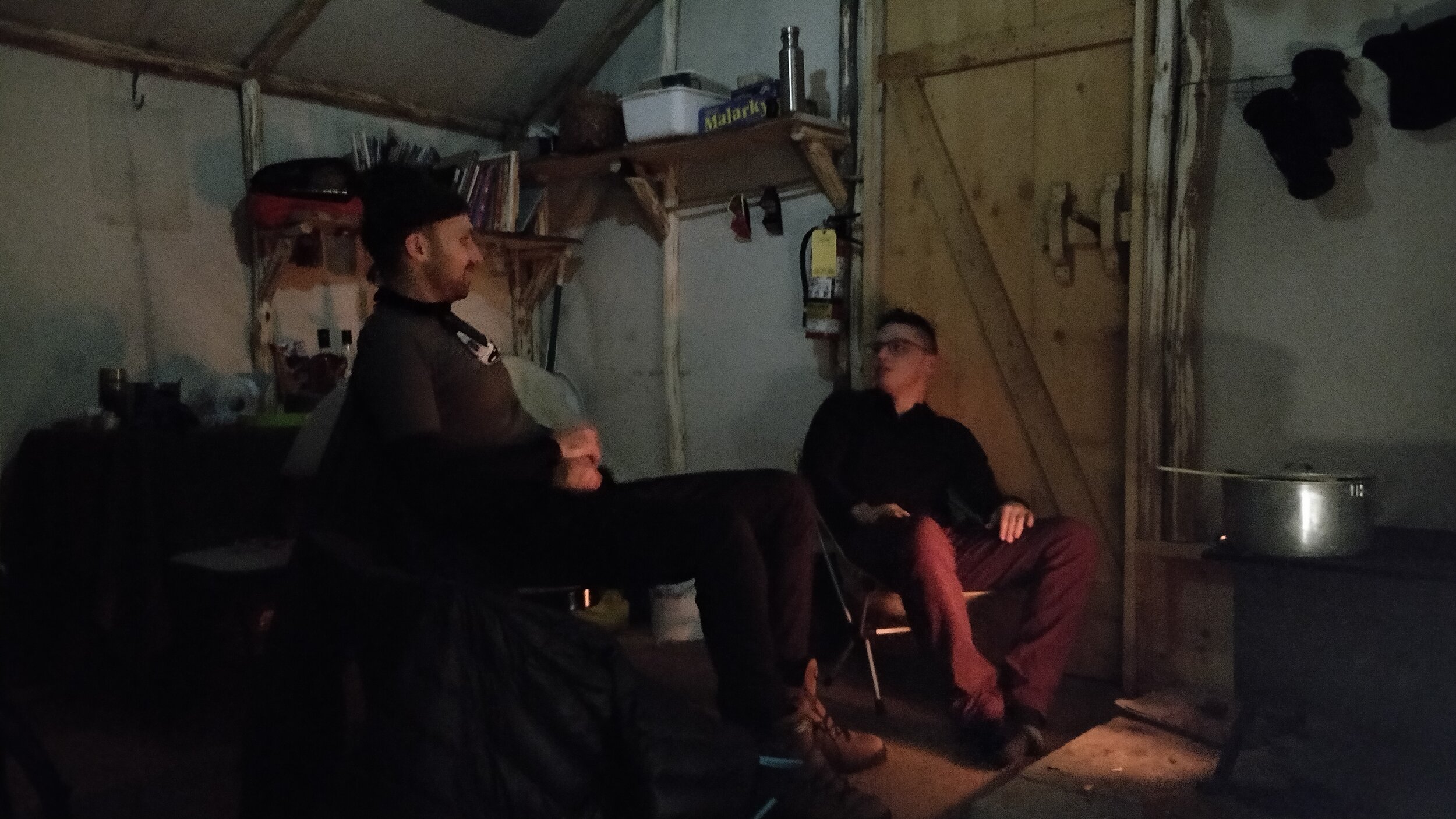Winter Camping in Espanola
It’s been said that there are three types of fun.
Type 1: The kind that’s fun to do and fun to talk about.
(Think about a long weekend in Algonquin with perfect weather, a couple short portages, no bugs, and lots of lazing around in camp.)Type 2: The kind that’s not fun to do, but fun to talk about.
(Think about painfully long hikes/paddles, questionable odds of survival, but with an amazing sense of accomplishment and pride afterwards.)Type 3: The kind that’s not fun to do, and not fun to talk about.
(Think about the time you forgot some important gear, fucked up your route, and got to camp after dark because you left the city too late.)
Winter camping is an unusual beast. It can be amazing and it can be painful, and often those two can be a few hours apart. I do one trip a year, and each year I try to make it more comfortable.
My first year, three of us showed up to Algonquin in January with a 3-season tent, no snowshoes, wearing jeans (okay that was just me), and expected to thrive for a weekend on the Western Uplands trail. We survived one night, and swiftly turned back. (We also got beaver fever on the way back from drinking untreated river water. Yay.)
The next year, we swore to do it right. We found out about Algonquin Basecamp (Hi Chris!) who set up outposts on a crown land lake that you can rent. A big canvas prospector ‘hot tent’ (i.e., with an indoor stove) and promises of a cushy weekend of snowshoeing and chopping wood. It was glorious.




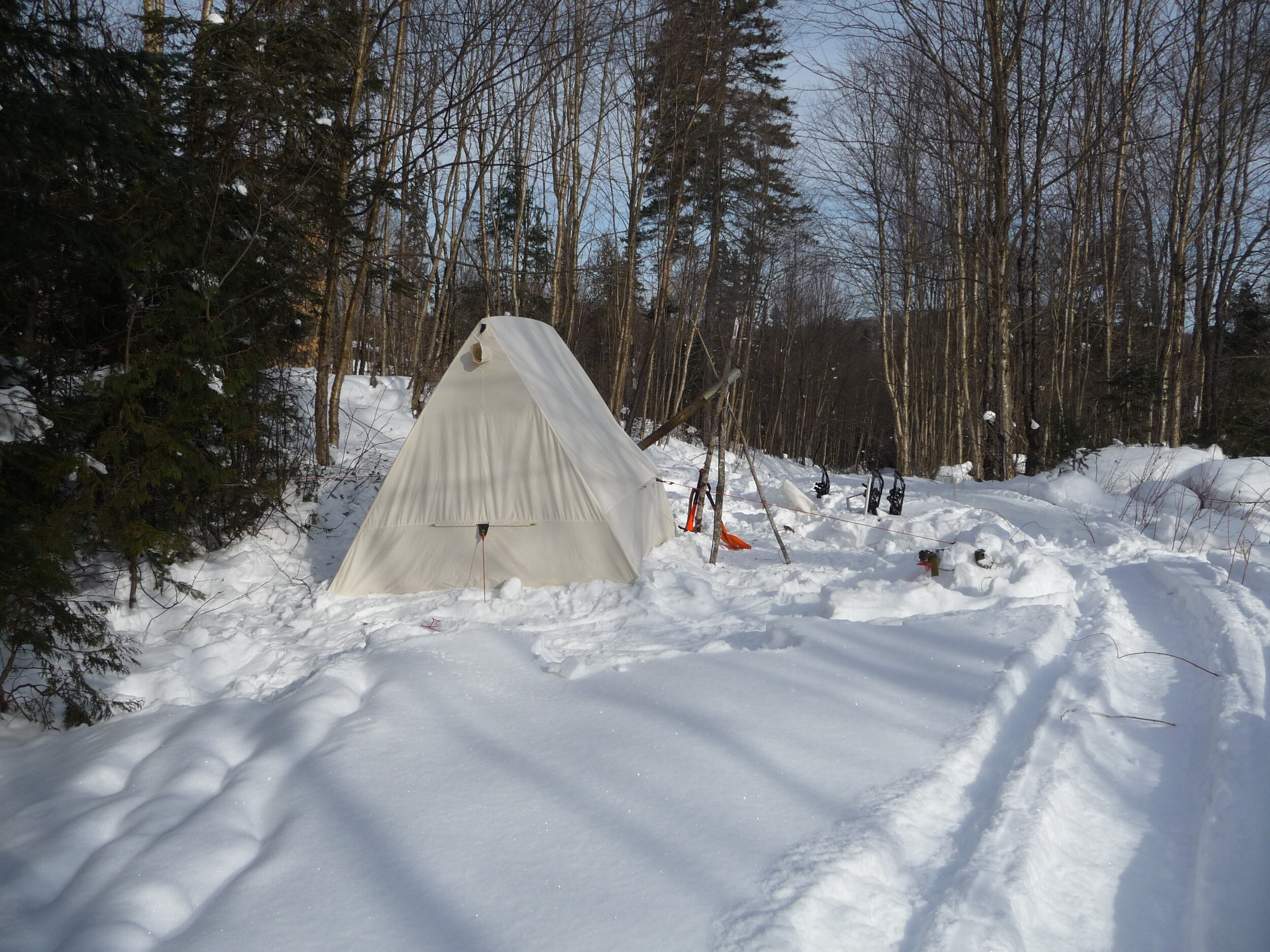
For a few years, we rented our gear from Chris and hauled it in ourselves - a canvas Snowtrekker tent and wood stove, carried on sleds over backcountry trails. Tons of crown land to explore and rarely any company - with the exception of snowmobilers ripping down the trails from time to time.
But we caught a bad habit of booking our trip on the coldest weekend of the year. Every year. The average seemed to spin around -30. I’ll tell you right now, there’s almost no way to make that comfortable. If you’re not shoveling wood into a fire, you’re not having a good time.
The Route
In my old age, I’ve been looking for ways to get winter camping as close to Fun Type 1 as possible. I found Kielyn and Dave at Lure of the North (LOTN), homesteaders and artisans who have set up an impressive camp in the backwoods outside Espanola. Just take a minute to watch the amazing video below, and you can start to understand what I mean.
In addition to their stunning (hand-made) home, and when they’re not leading multi-week expeditions into the backcountry, they’ve built a couple glamping-style camps: big canvas prospector tents, steady on wooden platforms with no shortage of amenities - including bunk beds, a propane stove, and board games.
For the last couple years, this has been my way to escape the city in the winter for a quick weekend adventure.
The Trip
Late in January, Jake, Jeff and I started a trek to Espanola for a weekend at the LOTN camp. Anticipating a big dump on the Saturday, we drove out Friday and spent the night at the Pinewood Inn, and enjoyed a few beer at a nearby sports bar.
From Espanola, we only had a 15-minute drive to our starting point - where we picked up our sleds (aka pulks) for the 7km hike into camp. Worth noting that pulks are the only way to haul gear in the winter. You’re welcome to carry yours on your back, but I’m going to pull mine on a 7-foot plastic sled that glides on the snow as if Clark Griswold waxed it himself.
When we left, the snow had only just started falling. It made for an amazing scene as we approached Golden Pond.
There are legends about the few voyageurs who carried disposable cameras.
Everything is a bit less hurried when you’re winter camping. You hike slower. Cooking takes longer. Dressing/undressing is a bit of a production. Getting camp ready can be a half-day affair. For first timers (and even veterans) finding a place like LOTN takes a lot of the pressure off and lets you enjoy a weekend in the snow.
When we made it to camp, we were able to settle in quick, get a fire going, and thaw ourselves out with a warm meal and a cold glass of wine. The glamping-style tent is full of amenities and despite being separated from -20 weather by a thin wall of canvas, you’d hardly notice with the fire chugging along.
Simmering chili and warm toes.
Not having to worry about moving camp and chopping wood, it freed us up to do some serious exploring. The LOTN homestead is adjacent to some quality crown land, and beautiful Moose Lake. It’s a popular spot for ice fishing, and rises up from the Canadian shield only a few kilometers inland from Georgian Bay.
We packed our bags for the day, strapped on the snowshoes, and headed out on a wander with a new friend, Hank, who made for an excellent hiking companion. We weren’t able to communicate that it was going to be a full-day hike, but he didn’t seem to mind.
Fresh tracks on a bluebird day.
After an 11km wander, a bit of bushwhacking, another night at -25, and a 7km hike back to our car, we were both exhausted and already planning next year’s adventure. There is a tendency to push the boundaries of comfort, so the next story may involve more backcountry and less glamping. But either way, this is a great way to spend some a weekend in the snowy wilderness without too much suffering.
The Food
Two fun realizations I had after that first winter trip into the Western Uplands: food freezes, and frozen food is hard to cook. This precludes certain recipes, even with a hot tent. It also turns out the human body can’t survive entirely on whisky, at least not for long, so we were pretty deliberate about food. Breakfasts were instant coffee (Nescafé Gold Espresso for the win) and oatmeal/fruit. Lunches were mostly snack food administered as required. And as for dinners:
Meal Plan
Day 1: Chicken Mulligatawny Soup (I copied this recipe from Goodfood, which I love. Prepared the ingredients ahead of time in separate bags for easy work in the kitchen).
Day 2: Vegan Chili (Prepared by Jeff using a recipe I can only assume is classified).
Pro Tips
Get a pulk. Rent one from your outfitter or make your own, but don’t carry your gear on your back - it’s no fun.
Your sleeping bag temperature rating is a survivability rating. For comfort, add 10˚C to it. (e.g., a bag rated at -10˚C is comfy down to 0˚C.). Layering two bags works surprisingly well - add the two ratings together for a decent estimate. Otherwise, rent from MEC or your outfitter.
Layers. Always layers. I recommend starting a hike cold, because you’ll heat up quick. You want to be ready to strip down to a mid layer at a moment’s notice. Also bring a big fancy parka for when you’re not moving - it gets cold fast, especially when you’re sweating.
There are lots more tips if you’re planning to haul your own tent/stove/gear into the backcountry. I’ll have to cover those another time, but in the meantime watch as much Youtube as you can.
